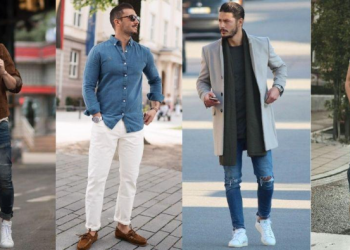Printing on t-shirts is a magical thing. You have this plain piece of fabric, and you can make it into anything, from a custom shirt reflecting your personality to a t-shirt drawing attention to an important social cause.
In the United States, every person will spend an approximate amount of $ 14 on t-shirts in the year 2022, predicts Statista. The T-shirt segment as a whole generated a revenue of $4.69 billion in 2022. This will grow at a CAGR of 5.25% till 2027. The numbers indicate lots of headroom to grow, and if you are planning to start a business, T-shirt design and printing might be a great option.holdbarhet nespresso kapsler
vinglas boda nova
qatar airways handgepäck gewicht
חוק רמקולים תחת כיפת השמיים
כורסא אגורה
nike tech fleece tapered joggers in blue
dámské jarni kotníkové boty tamaris
best apple watch bands for women
dežna obleka za otroke
spodnje hlače moške
It’s a great time to be in the custom t-shirt printing industry. The global market for custom printed t-shirts should touch $9.18 billion by 2030, predicts Research and Markets, a market research firm. The industry is supposed to grow at a CAGR of 9.9% from 2022 to 2030, mentions the same report.
There are lots of different ways to start printing t-shirts. In this article, we’ll go over some of the most popular methods and how they work, so that you can decide which one is right for your project.
1. Heat Transfer
In this process, the image is printed on a special polyester film that adheres to the shirt during the heat transfer process.
Heat Transfer using Vinyl films is a very versatile yet simple process. It can be used to transfer designs on your t-shirts, where your design is on a vinyl film. We recommend you start printing t-shirts with this method right away to learn the basics. Browse reliable online resources that can guide you through creating a heat transfer vinyl shirt.
The upside of this process is that it is relatively cost-effective and efficient when you have large orders. When you print your shirts with this method, it can take up to 2 weeks from start to finish.
With heat transfer printing, there are no limits to the color substrate. You can transfer the design to garments of any color. You can deliver more variety to your clients. In the case of sublimation, we can print only on fabrics with light colors.
2. Dye Sublimation
Dye sublimation is a type of print method which involves transferring the image onto the fabric with a heat press. A special paper is printed with the image using a laser and then placed on top of the fabric.
When heated by a heat press, the dye in the paper transfers to the fabric, creating a permanent print. This method is more expensive than standard printing techniques because it requires higher-quality materials. It also requires more time for setup and cleanup.
It can also be used for full-color projects. However, it will take longer than other methods as it will need multiple passes through the press for each color printed in your design. This method is appropriate for premium t-shirts with proper order deadlines. You will need time to deliver your best work.
3. Inkjet Printing
Inkjet printing is a type of digital printing where small ink drops are used to print on fabrics. It’s similar to the kind of printer you have at home. Instead of paper, it prints on fabric.
Inkjet printers use water-based dye inks that require heat activation to bond with the fabric. The process can take between six and eight hours for each color, depending on the thickness of your t-shirt.
A benefit of this method is that it doesn’t require any special equipment like screens or plates, which makes it perfect for smaller runs.
A disadvantage is that because there’s not much space between each drop, it tends not to be as durable as screen printing or offset printing. Also, it uses a lower amount of ink than other methods. Inkjet printing has a higher probability of fading over time. It will fade if your customers wash their t-shirts very often.
4. Vinyl Printing
Vinyl printing is a process of applying a thin layer of vinyl over the garment. Vinyl prints are not as durable as other methods and can be removed by washing. This makes it less practical for long-term use but great for short-run projects and temporary designs that will not be seen again once washed.
Vinyl prints are also not as bright in color as other methods, making them ideal for dark garments and ink colors like black or navy blue.
5. Direct to Garment Printing
Direct Garment or DTG printing is an excellent choice for those who need a large number of shirts. The process is the same as screen printing, but the ink is printed directly onto the garment instead of having to create screens and set up multiple machines.
The ink is permanent, so it won’t wash off and will have no wrinkles or creases. The ink is water-based, so it’s safe to wear and may not cause skin irritation.
Direct-to-Garment Printing has become popular because it uses less energy than traditional methods like screen printing or heat transfers, which means your shirt can be cheaper.
6. Screen Printing
The most common method is screen printing, which is when a mesh stencil with the design is pressed against ink and then pressed onto the t-shirt.
It’s a great choice if you want bold colors or designs and isn’t worried about how many colors you need. It can be expensive because each color requires its stencil.
Check all your printing equipment and inks for eco-friendly options too. Adopting sustainable practices can help you build credence with your consumers, too, as the younger generation is more environmentally conscious.
The fast fashion industry has already been under fire for its high carbon footprint. The United Nations Environmental Programme (UNEP) attributes 2-8% of global carbon emissions to this industry.
There are so many different ways to print on fabric. The method you choose will depend on your preferences, budget, and available resources. Your order quantity will determine the choice of printing technique to some extent. Also, your plans for growth and expansion should be factored in while investing in printing equipment. Your infrastructure should not be a bottleneck for you to grow in this industry.





